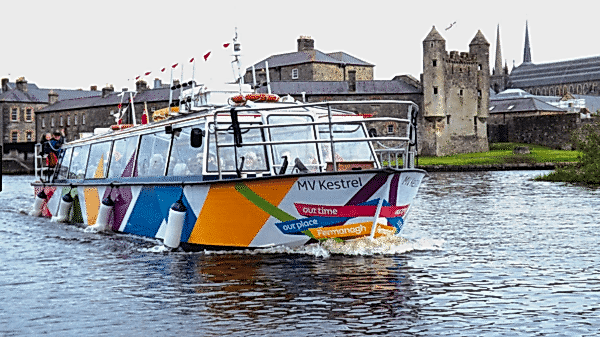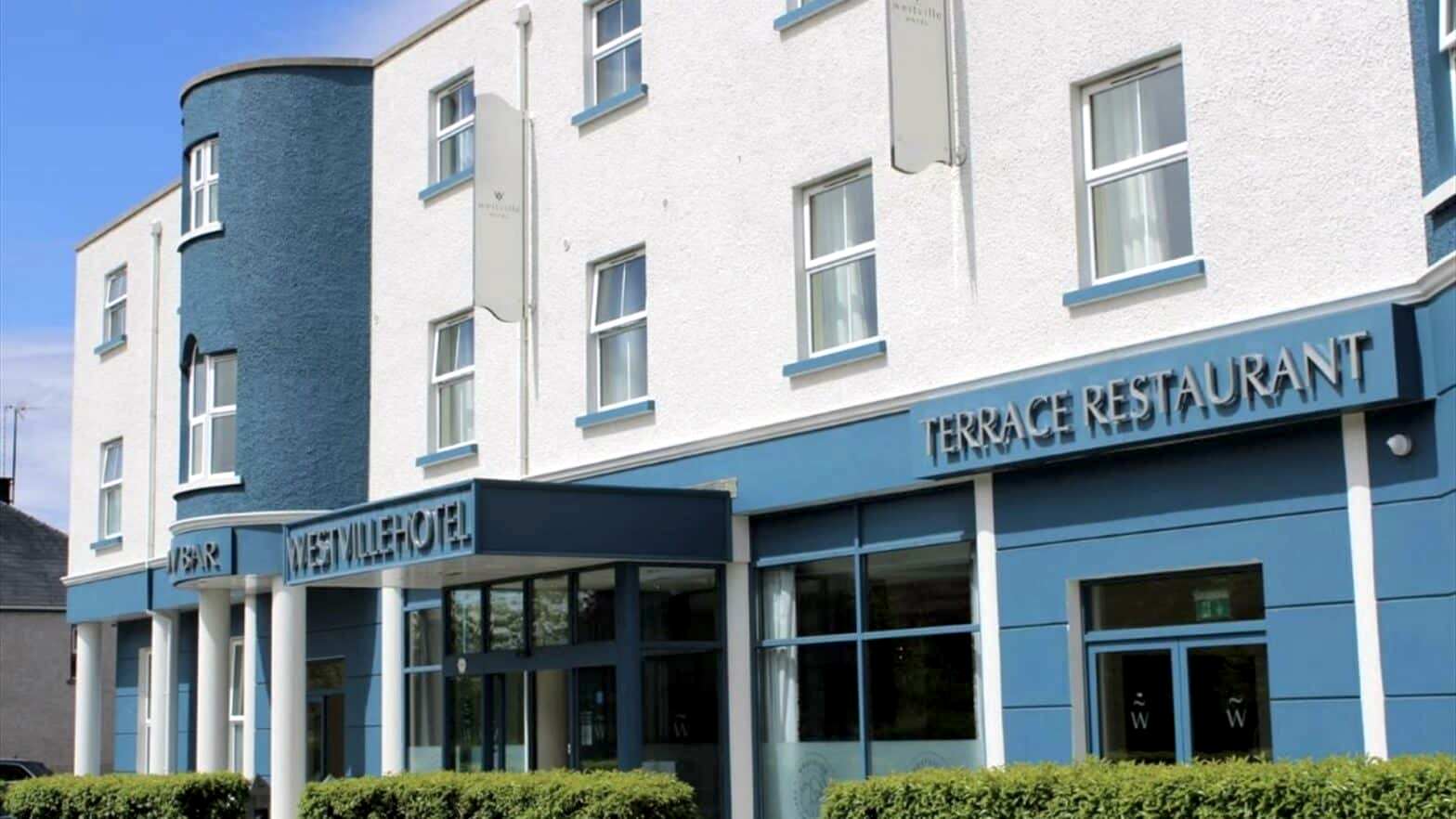Nestled between Upper and Lower Lough Erne in County Fermanagh, Enniskillen is a town with a long and fascinating history. From ancient settlements to military significance, Enniskillen’s past is woven into the fabric of Ireland’s rich heritage. Today, it is not only a gateway to some of Northern Ireland’s most stunning landscapes but also a town steeped in history, with landmarks and stories that continue to captivate visitors. Let’s explore the key events that have shaped Enniskillen over the centuries.
Ancient Beginnings and Early Settlement
Enniskillen’s roots can be traced back to ancient times when Gaelic clans inhabited the area. The town’s name derives from the Irish “Inis Ceithleann,” meaning the Island of Kathleen—a reference to an old legend about a warrior woman who died in the nearby waters. The island between the two lakes made it a natural settlement point, and its strategic location gave rise to early fortifications, with clans such as the Maguires playing a prominent role in the area’s early development.
- Did you know? The area around Enniskillen is rich with Neolithic and early Christian archaeology, such as the ancient monastic site on Devenish Island.
The Building of Enniskillen Castle
One of the most iconic landmarks in Enniskillen is Enniskillen Castle, built in the early 16th century by Hugh Maguire, head of the powerful Maguire clan. The castle was originally constructed to guard one of the few points where it was possible to cross the river between Upper and Lower Lough Erne. Its strategic position made it a focal point during times of conflict, especially in battles between the native Irish and English forces.
Over the centuries, Enniskillen Castle has served various roles, from a Gaelic stronghold to a military barracks under British rule. Today, it houses two museums—the Fermanagh County Museum and The Inniskillings Museum, which provide insight into the history of the area, including its military past.
- Tip: Visit the Castle Keep and explore interactive exhibits to understand how Enniskillen played a role in shaping Irish history.
The Plantation of Ulster and Enniskillen’s Growth
The Plantation of Ulster in the 17th century, during which English and Scottish settlers were encouraged to settle in Northern Ireland, significantly altered the town’s demographics. Enniskillen grew as a result of this initiative, transforming from a Gaelic stronghold into a key town within the English-controlled region.
During this period, Enniskillen became known for its strong Protestant military tradition. In 1689, the town famously resisted the forces of King James II during the Williamite War, and Enniskillen’s defenders played a significant role in the Protestant victory at the Battle of the Boyne. The town’s military tradition was further cemented with the formation of the Inniskilling Dragoons and Inniskilling Fusiliers, two of the most renowned regiments in British history.
Enniskillen’s Military Legacy
Enniskillen’s military history is deeply intertwined with both Irish and British history. The town was a key military post during many conflicts, including World War I and World War II. The Inniskillings Museum, located within Enniskillen Castle, tells the story of the brave soldiers who fought in these wars, tracing the regiments’ roots and their role in global conflicts.
Enniskillen also played a somber role in the Troubles, the period of political and sectarian violence in Northern Ireland from the late 1960s until the 1990s. The 1987 Remembrance Day bombing, which killed 12 people, is a poignant reminder of the town’s resilience in the face of adversity. Today, the Clinton Peace Centre, opened by former US President Bill Clinton, stands as a symbol of hope and reconciliation in Enniskillen.
Modern Enniskillen: A Town of Culture and Heritage
In more recent times, Enniskillen has transformed into a vibrant cultural hub, attracting visitors from all over the world to explore its rich history, stunning landscapes, and arts scene. The Buttermarket, a former dairy market, has been converted into an arts and crafts centre, where local artisans showcase their work. Additionally, Enniskillen hosts numerous festivals and events throughout the year, including the Enniskillen International Beckett Festival, celebrating the legacy of playwright Samuel Beckett, who studied at Portora Royal School in Enniskillen.
FAQs
What is Enniskillen Castle known for?
Enniskillen Castle is known for its strategic location and military significance. Built by the Maguires in the 16th century, it has served as a Gaelic stronghold, English garrison, and military barracks. Today, it houses two museums that explore the region’s military and cultural history.
How did Enniskillen get its name?
Enniskillen’s name comes from the Irish “Inis Ceithleann,” meaning the Island of Kathleen, named after a legendary female warrior who, according to myth, died in the nearby waters.
What is the role of Enniskillen in the Williamite War?
Enniskillen played a crucial role in the Williamite War, particularly in resisting King James II’s forces. The town’s defenders helped secure a Protestant victory at the Battle of the Boyne.
Can I visit the Clinton Peace Centre?
Yes, the Clinton Peace Centre is open to the public and serves as a reminder of peace and reconciliation efforts following the Troubles in Northern Ireland.
Conclusion
Enniskillen’s rich history is evident at every turn, from its ancient Gaelic roots and medieval fortifications to its military legacy and modern cultural scene. Whether exploring Enniskillen Castle, walking the historic streets, or learning about its pivotal role in Irish history, this town offers an incredible journey through time. Today, Enniskillen stands as a symbol of resilience and cultural heritage, making it a must-visit destination for history enthusiasts and travelers alike.


